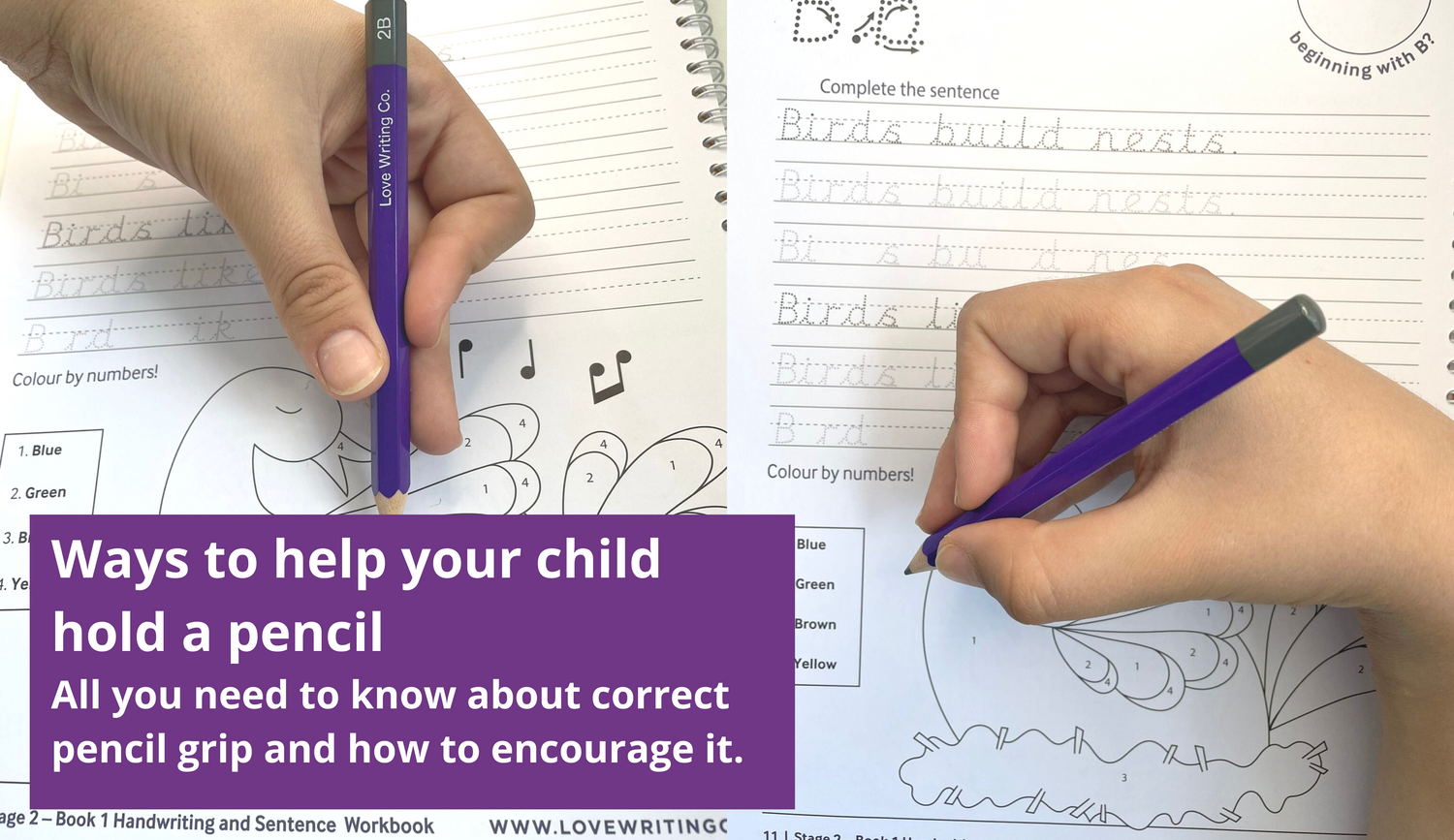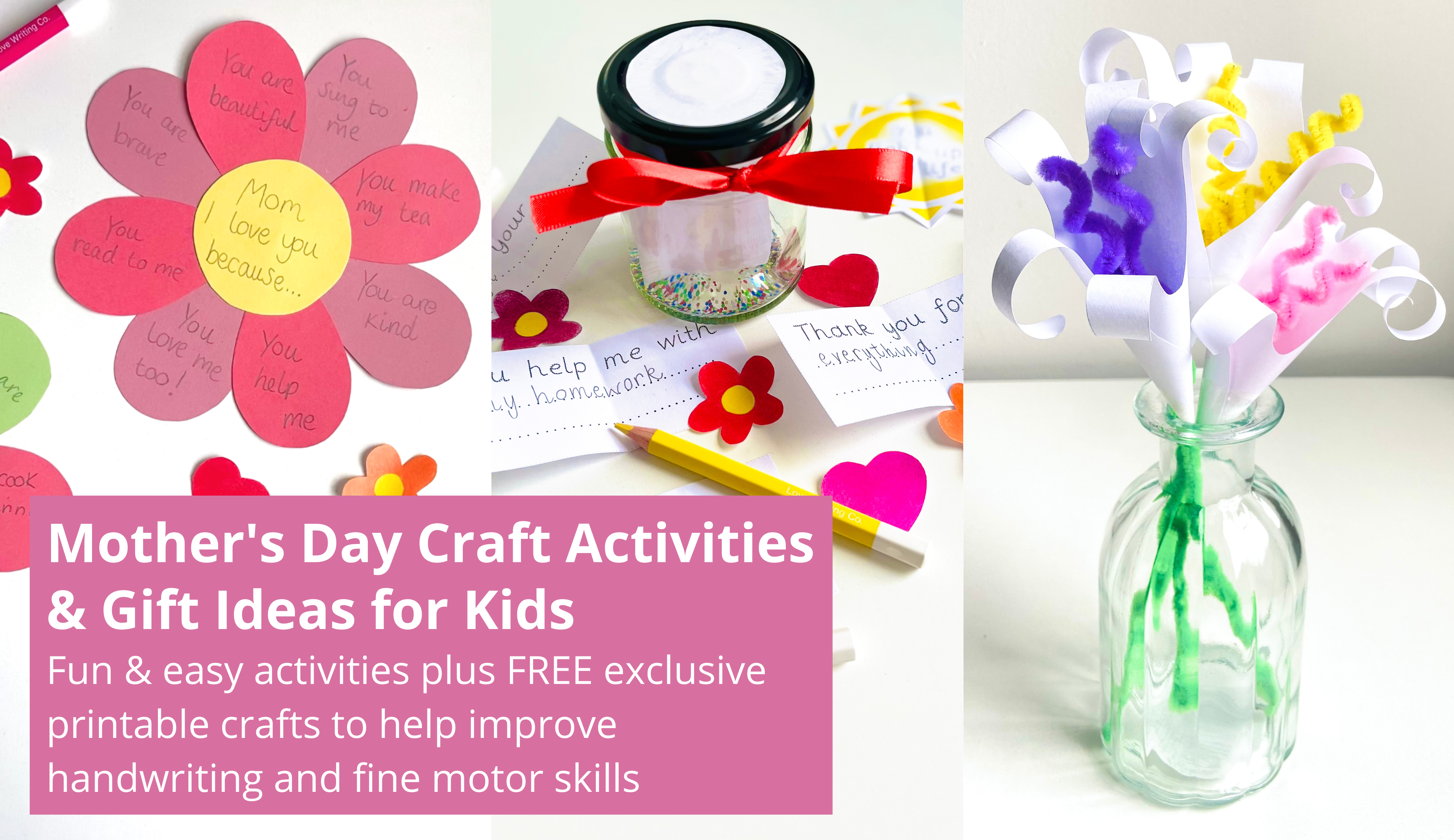4. Min Read
Have you ever noticed a “writer’s callus” on your finger of the hand that you write with? Like many of us, I certainly have one too!
I remember many moons ago after completing an exam or essay that it would turn very red and sore. Little did I know this was all due to me not holding my pen and pencils properly.
In today’s day and age, many children are heavily focused on the use of technology and digital devices with keyboards and touchpads, meaning it can often be a ‘new’ experience for them when holding a pencil.
This is why it is so important to offer our children fun experiences with a variety of activities and materials to encourage the correct pencil grip grasp from the very beginning. This way, we can help them to avoid any pain from handwriting or even any discouragement from handwriting. This would mean we are able to ultimately eliminate a negative start to learning to write which can often be the cause of reluctant writers.
The correct grip of a pencil plays a massive part in a child's learning life and heavily influences a child's development of how they can then read and write.
So, if you're curious to find out more about ways to help your child to hold a pencil correctly then we’ve got you covered! We'll be discussing:
-
Why is pencil grip so important?
-
How and why picture is so important to children's handwriting
-
The correct grip: from what age should I be encouraging pencil grip?
-
Tips to strengthen pencil grip
-
How to hold a pencil – the 5 common stages of pencil grip development
-
Way improve your child’s pencil grip
In this article you will also find links to writing resources that we, at Love Writing Co., have designed to encourage and develop the correct grip in children. With a wide range of resources such as Tripod Grip Pencils with a unique chunky hexagonal shape and handwriting practice control workbooks.
Take a look at some of the top products we suggest for correct tripod grip pencil practice:
- Ages 3-9 Tripod Grip Handwriting Pencils Available in bundles or single items
- Ages 3-5: My First Pencil Control Downloadable Book
- Ages 6-9: My Pencil Control and Handwriting Practice Downloadable book
-
Why is pencil grip so important?
The skill of ‘gripping’ an object is complex one and requires exercise to develop. This is why ‘gripping’ should be encouraged from pre-school age in various forms of activity and play.
The handgrip of a pencil is a fundamental prerequisite for writing. The way a pencil is gripped will determine how ‘easy’ your child will find it to write.
Holding a pencil allows our child:
- to manage movement with precision;
- to get stronger fine motor skills;
- to develop hand-eye coordination.
Great ways to encourage gripping is through colouring and drawing, the use of scissors when cutting out (remember to use left-handed appropriate scissors if your child is showing signs of left-hand dominant), and tasks such as holding their cutlery to eat or holding their toothbrush themselves.
-
Posture is also important!
To hold a pencil correctly is important, but so is posture.
Many children may enjoy laying on the ground and writing or drawing or naturally tilt to the side when sitting down - however this does not help them to grip their pencil correctly in these positions.
Here is a description of how your child should be encouraged to sit when practising handwriting at a desk in the classroom or at home:
- sit comfortably;
- upright torso, not rigid, slightly leaning forward without leaning on the desk, shoulders relaxed;
- feet resting on the floor: if the child cannot put his or her feet on the floor, place small support such as a footrest or shoe box to provide extra support;
- elbows resting on the table rather than hanging off the edge of the table;
- non-writing hand resting on the paper and under the writing hand.
Follow us on Instagram and Facebook for more handwriting hints & tips, search us @lovewritingco

-
The correct grip: what age should I be encouraging grip?
We should avoid associating handgrip exclusively with pencils, writing or drawing when teaching our children and start including it throughout early years day-to-day life. Grip is required from an early age and is a physiological competence that begins with activities they need every day such as eating food; whether it be by hand or with cutlery.
At around the age of two and a half, a child moves from a palmar grip, i.e. the whole hand, to a digital pronate grip (see below for more details).
Here at Love Writing Co., we say if they are interested in mark making then let’s strengthen those skills by encouraging good grip practice. Many parents incorporate grip practice from the age of 2. At this age, your child also begins to take an interest in drawing and handwriting. At this stage we should help our child’s development by showing and explaining how to grip a pencil and of course by providing the right tools for handwriting.
All of our handwriting practice tools are designed to encourage good writing skills from an early age. Our handwriting pencils are uniquely designed with an age appropriate hand size, chunky hexagonal grip - this allows children to grip the pencil easier whilst adopting the correct tripod grip. Love Writing Co. pencils are wider than the normal ones on the market to prevent muscle fatigue for our little ones.
-
Tips to strengthen pencil grip
We can help our children develop the fine motor skills required for good pencil grip. Here are a few super fun activities that you can try:
- Play 'tie shoelaces' - Threading the laces in the holes is an excellent fine motor task for kids and encourages bilateral hand coordination.
- Encourage your child to cut out paper with scissors (left-handed scissors if required). It is important to check that scissors are held in the appropriate way: thumb in the first loop and index and middle finger in the next. This will allow your little one to exercise both fine motor skills and eye-hand coordination which are both crucial for learning to write.
- Use playdough - squish it, shape it, pull it!
- Allow them to practice opening and closing pegs - by pinching the top together to open the peg, they will engage their hand, wrist and arm strength and coordination as well as fine motor skills.
- Try to avoid utensils such as felt-tip pens as they are harder to grip and children often are unable to apply correct pressure onto paper - Stick to pencils.
-
How to hold a pencil – 5 stages
There are typically 6 developmental stages of pencil grip for children. An important piece of information: when you hear the term ‘A functional pencil grasp’, it essentially means a grasp where the children use a pencil comfortably, efficiently and effectively.
Children typically progress through these writing stages in a generic predictable pattern. Yet, it is important to note that grasp development, while it can be predictable, can also vary in time.
Important Note: Every child is different and if their grasp doesn’t follow the pattern suggested then this is completely fine! Some children may skip a step in pattern and go straight from one grasp to another or simply take a little longer to develop in stages - again, which is completely okay. If you have any concerns about your child’s grasp development, always consult a professional.
Let’s take a look at the different stages of pencil grip development and a timeline that these can look like:
-
Pincer grip.
Typically seen in children under 12 months.
The pincer grip is such an important fine motor milestone for your child! This is the ability to hold an object between the thumb and first finger. This skill usually develops in babies around 9 to 10 months old. It is often seen in children when they start to pick up food to feed themselves. -
Digital pronate grip.
Typically seen in children between 2-3 years old.
All fingers are holding the writing tool but the wrist is turned so that the palm is facing down towards the page. The movement now comes mostly from the elbow. Children should start being able to mark-make horizontal, vertical, and circular lines. -
Four Finger grip.
Typically seen in children between 3-4 years old.
Four fingers are held to the writing tool. Movement is mostly from the wrist and the hand and fingers move as one. -
Static tripod grip.
Typically seen in children between 4-6 years old.
This is a 3 finger grasp where the thumb, index finger, and middle finger work as one unit. -
Dynamic tripod grip.
Tripod Grip being the end goal. Usually mastered By 6 or 7 years old.
Using only 3 fingers to hold the writing tool. This is the ideal grip to help move the pencil efficiently, and accurately.
-
How to improve your child’s pencil grip?
- Encourage your child to place the pads of their index finger, middle finger, and thumb on the pencil.
- Provide some hand-in-hand assistance when initially holding the pencil to demonstrate how the pencil should be gripped - a ‘show and tell’ of how to hold a pencil is a great way for visual learners too.
- Encourage your child to rest their forearms on the table top to stabilize their arm to control the pencil.
- Observe them as they write, draw and colour and keep repositioning their fingers as they move - a constant repositioning of their hands and fingers will allow them to understand how their hands ‘should’ be placed and encourage them to do so for longer periods of time.
- If, like many children, your little one is not a big fan of assistance when carrying out a task (we are often met with “no, i can do it myself!”, we all know that too well!) and returns to holding the pencil in an incorrect stance, then try out using shorter utensils. This limits their grip on the utensil and encourages them to use their fingertips to hold it. All of our pencils, erasable colour pencils and crayons are created with this in mind. With a shorter length and wider diameter, Love Writing Co. handwriting utensils allow for a better, tripod grip. Shop the collection here.
- Try writing on a vertical surface, such as a chalkboard or painting easel. This will encourage your child to change finger grip and also allows them to engage their core and upper body strength. Check out the picture below.
- Encourage your child to practice tracing marks on a vertical or sloping surface - place a piece of paper onto a wall with blue-tac and allow them to write on the wall surface. This allows them to change the positioning of their fingers, wrists and forearms for correct writing posture and grip.
If you’re looking for resources to help your child learn to write at home, check these out.
Shop Handwriting and letter formation workbooks here:
- Handwriting Practice & Alphabet Letter Formation Workbooks: Available in ages 3-9
- Cursive and Pre-Cursive books that complement the UK National School Curriculum | SEND Friendly | Left and right hand friendly books
Shop Tripod Grip Writing Tools here:
We hope these tips help and we think you’d love to check out this article out too:
Follow us on TikTok, Instagram and Facebook for more learning tips and advice. Visit our website to shop handwriting resources. www.lovewritingco.com









Leave a comment
All comments are moderated before being published.
This site is protected by hCaptcha and the hCaptcha Privacy Policy and Terms of Service apply.